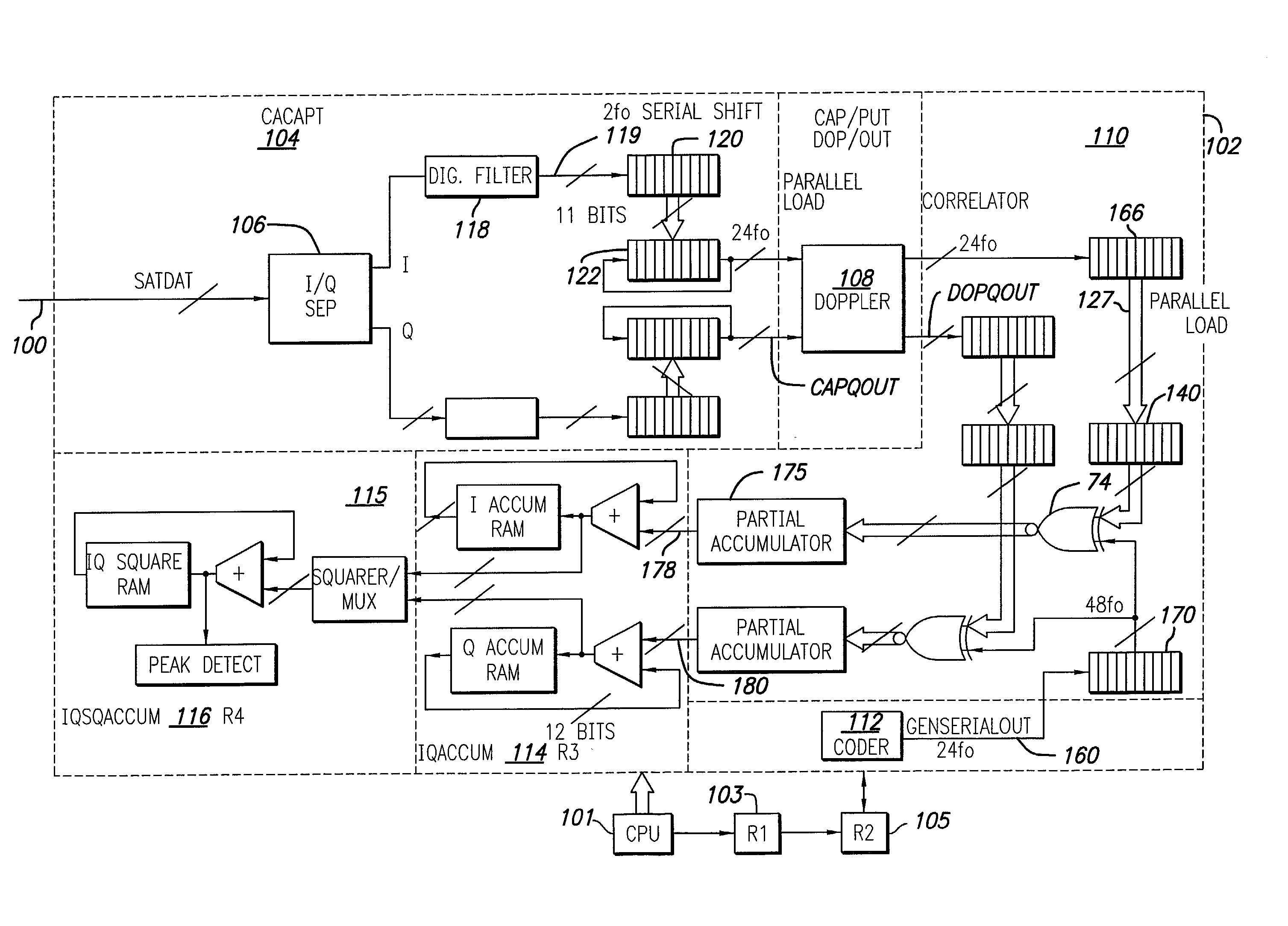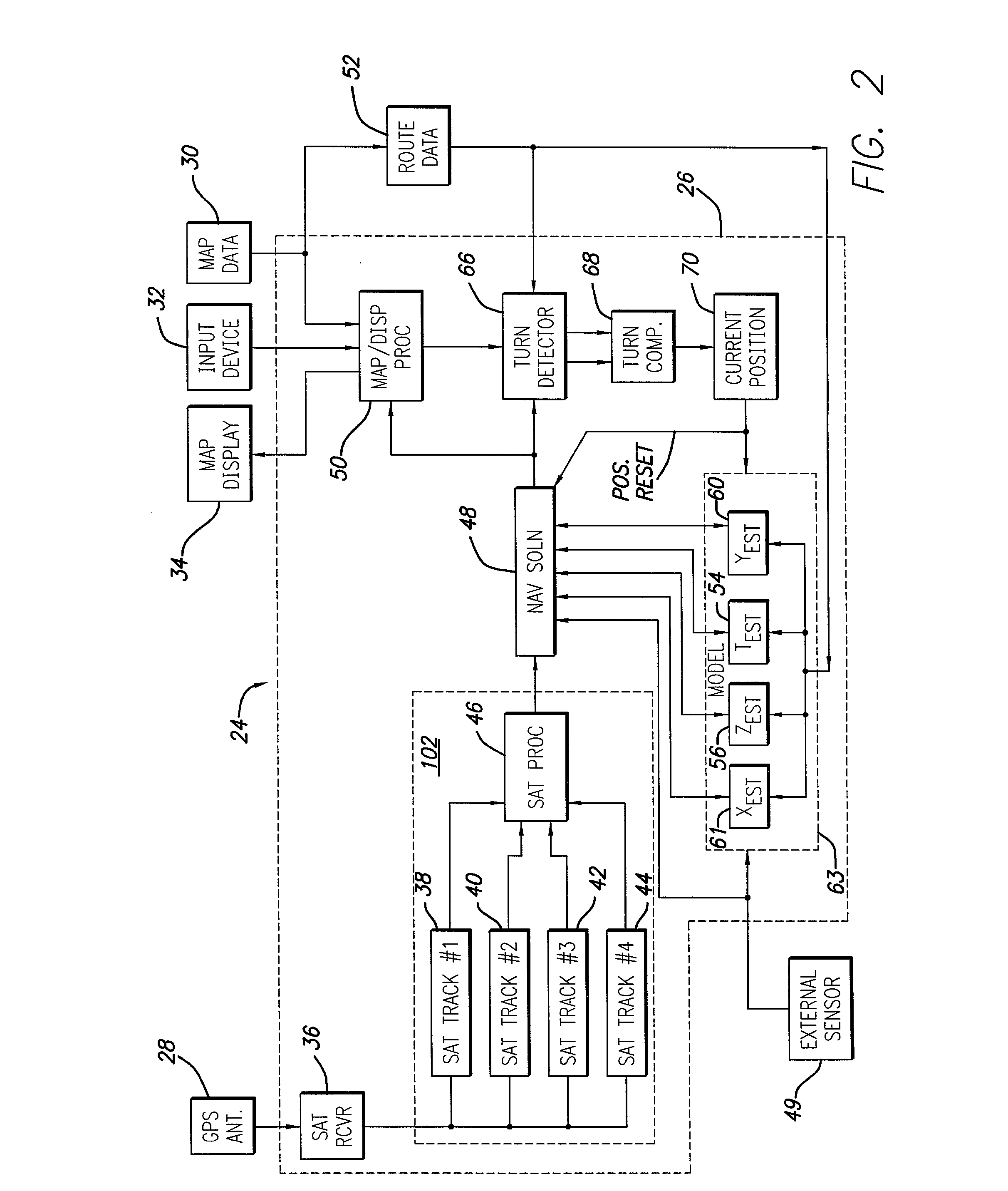Pseudo-noise correlator for GPS spread-spectrum receiver
a spread-spectrum receiver and pseudo-noise technology, applied in multi-frequency code systems, distance measurement, instruments, etc., can solve the problems of limited acceptance, difficult maintenance of continuous reception from four gps satellites, and increased complexity and cost of such combined systems
- Summary
- Abstract
- Description
- Claims
- Application Information
AI Technical Summary
Problems solved by technology
Method used
Image
Examples
Embodiment Construction
GRF1 Signal Description Pin No. Symbol Type Description 1, 2 IF, {overscore (IF)} Inputs Differential IF inputs: balanced inputs to the IF stage; a filter should be placed between these inputs and the mixer outputs. DC bias to the positive supply must be applied to these pins. 3, 4 {overscore (MIX)}, MIX Outputs Differential IF Outputs; balanced outputs of the LNA / Mixer stage, a filter should be placed between these outputs and the IF inputs. DO bias to the positive supply must be applied to these pins. 5 VEE (LNA) Input LNA / Mixer ground pin. 6, 7 {overscore (RF)}, RF Inputs Differential LNA inputs. For best performance a balun should be used. Decouping should be to ground. 8 VCCLNA Input Postive supply input for LNA / Mixer block. Decoupling to ground via 0.01 .mu.F or larger capacitors should be provided. 9 VCCVCO Input Postive supply input for VCO block. Decoupling to ground via 0.01 .mu.F or larger capacitors should be provided. 10 VEEVCO Input VCO ground pin. 11 VEECHP Input Char...
PUM
 Login to View More
Login to View More Abstract
Description
Claims
Application Information
 Login to View More
Login to View More - R&D
- Intellectual Property
- Life Sciences
- Materials
- Tech Scout
- Unparalleled Data Quality
- Higher Quality Content
- 60% Fewer Hallucinations
Browse by: Latest US Patents, China's latest patents, Technical Efficacy Thesaurus, Application Domain, Technology Topic, Popular Technical Reports.
© 2025 PatSnap. All rights reserved.Legal|Privacy policy|Modern Slavery Act Transparency Statement|Sitemap|About US| Contact US: help@patsnap.com



